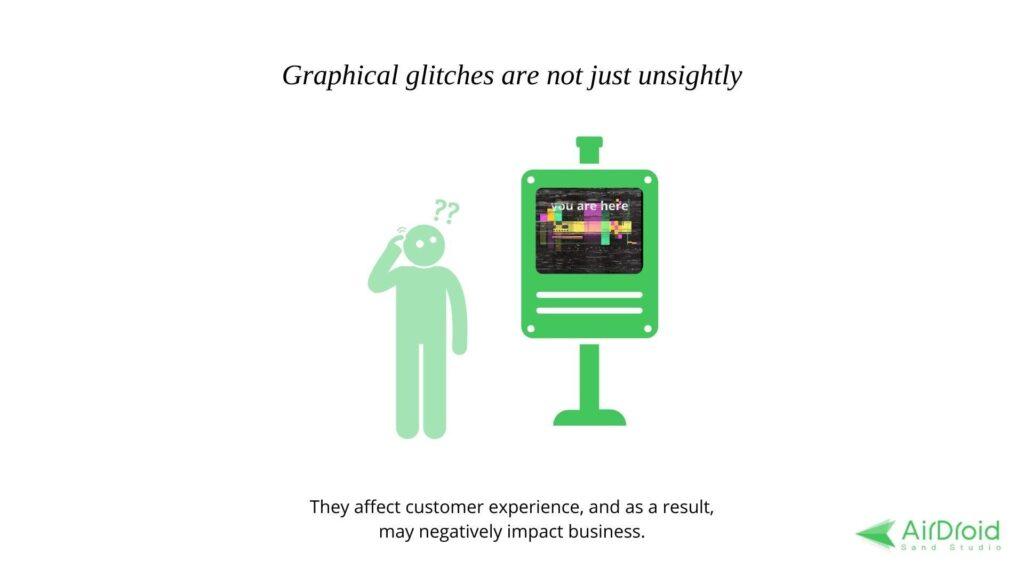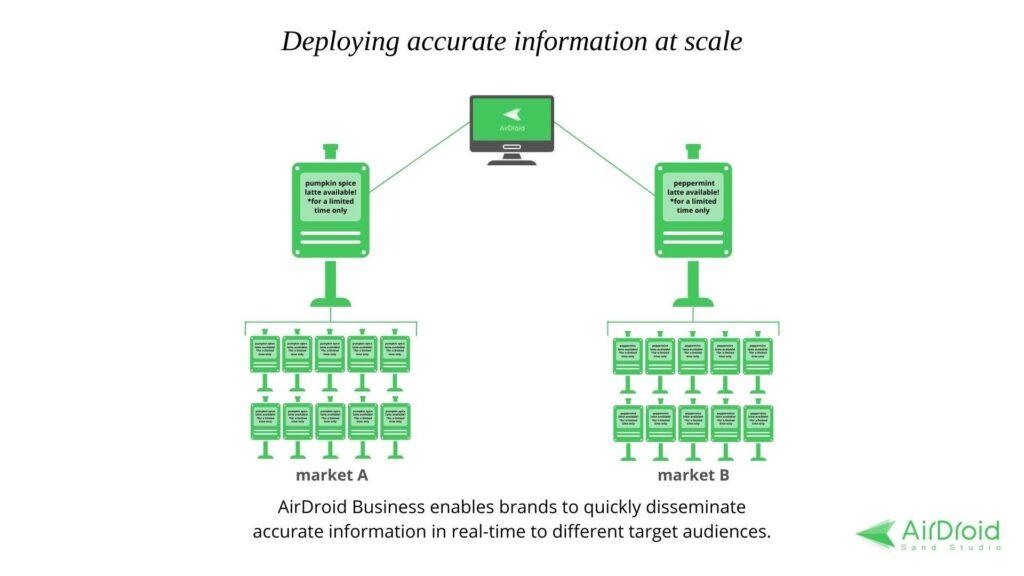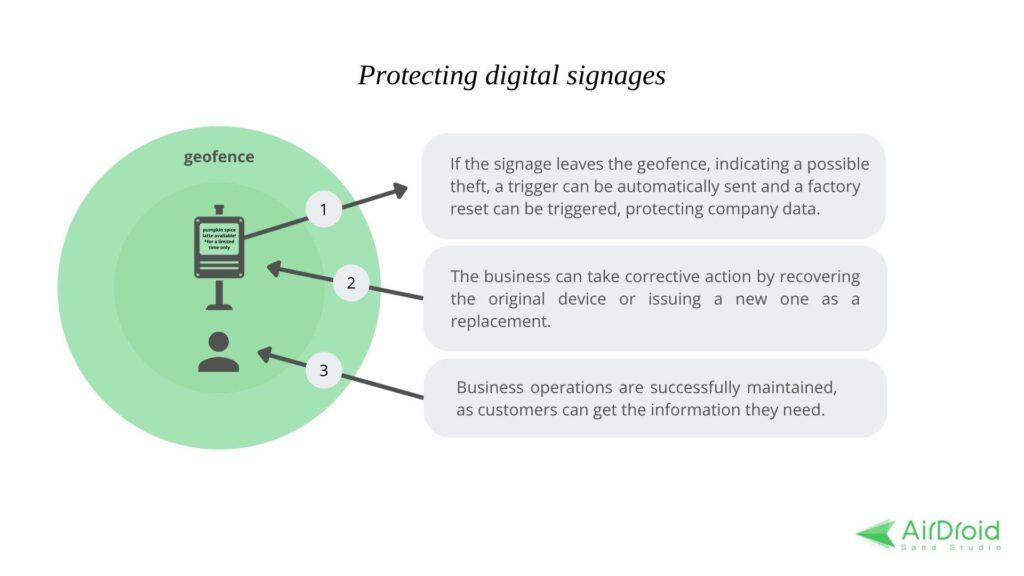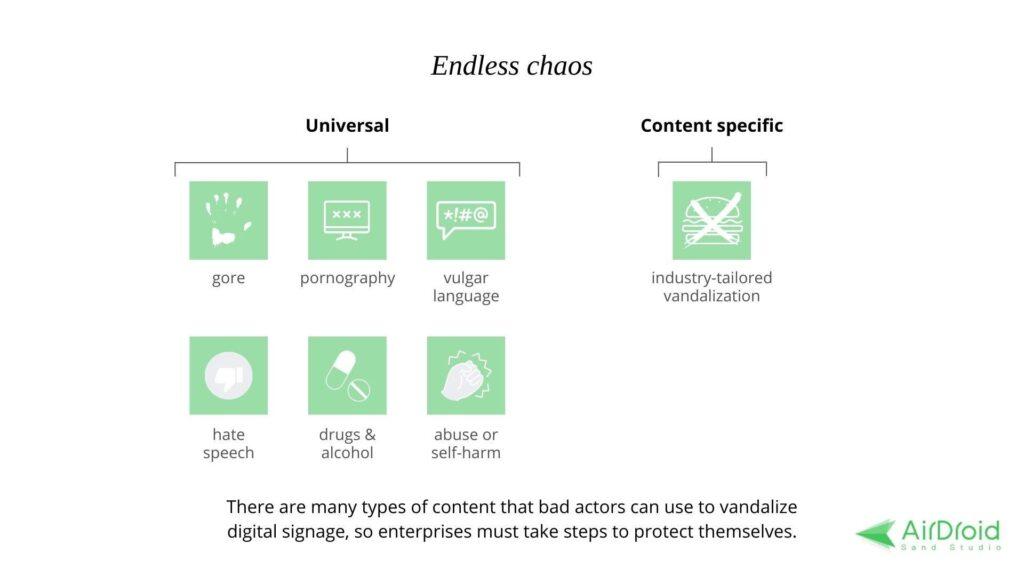Last Updated on August 18, 2025

When it comes to digital signages, most businesses think about them from the same perspective they use when executing other collaterals, such as print advertisements. These business leaders prioritize branding: the look and feel of the signage should be faithful to the brand, any elements from the brand bible should be rendered accurately, and the tone of the copy should be consistent with the brand voice.
This perspective is short-sighted. There is so much more to digital signage than just branding, which is only the first step. Unlike print advertisements and other collaterals, which are completed once a brand manager vets their quality and signs off on their publication, digital displays have a never-ending life-cycle. During this period, any number of things can go wrong, and they often do.
Business leaders, including those from both IT and marketing and communications, should be aware of these problems as they can materially affect the brand. Issues with digital signages can result in lost business, reputational damage, and even legal problems.
No single technology can ever prevent all the possible issues that may arise with digital signages, but the right solution will mitigate them. As a trusted MDM, AirDroid Business is one such solution. Since most digital signages are outputted from the control center of an Android TV box, AirDroid Business MDM can enable businesses to quickly address any of these common issues that occur with digital signages.
Graphical glitches and other errors

These are the most common issues that come to mind when thinking of digital display issues. The visual errors may be small, such as pixelated or distorted images, or take up the entire screen. These glitches may be irritating, but they create a bad image (pun intended) of the brand: If this business could not even get its signage to display correctly, why should the customer trust its products or services?
In other cases, the issue is not just one of brand trust. Many digital signages do not just communicate branding, but are there for informational or transactional purposes. A kiosk may welcome shoppers into a department store with a layout of the store, or a menu may present order choices at a fast food restaurant. If these signages are not working, the customer may just leave rather than struggle for a work-around. Digital signages are as much for the customer experience, after all, as they are the products or services.

With an MDM like AirDroid Business, enterprises can remotely monitor the status of their digital signage from a central hub and fix any visual issues in real-time. That way, the business maintains the two elements that all digital signages are meant to preserve in the first place: brand trust and customer experience.
Factual errors or outdated information
This problem may seem more minor than graphical glitches, but it potentially creates an even worse customer experience. If there is a glitch on the digital menu at a fast food restaurant, the patron will just take their business elsewhere. If, on the other hand, the digital menu displays incorrect information, the patron, who is none-the-wiser, will continue with their order.

Can you imagine a scenario where this patron waits in line for fifteen minutes, only for the cashier to tell him that the item he wanted is no longer available? The patron will have every right to be frustrated. In a digital world already rife with misinformation, businesses should represent a welcome respite: Customers should know exactly what they are getting. There should be no rug pull, or bait-and-switch.
These scenarios often occur because enterprises struggle with rolling out updated content at scale. With its bulk file management feature, AirDroid Business solves this problem. The fast food chain described above could remove the item that was only available for a limited time, and in turn, the potential of customer frustration. These controls are also much finer than just a simple on or off: The business could set a deeper logic for the menus, such as keeping the menu with the seasonal item in market A, but not in market B. In this way, the digital signages can be as agile as the business wishes to operate.
Device theft

Problems with digital signages are not limited to the screens themselves. These devices, particularly the smaller ones, are a security risk. Since most digital signages can be reconfigured, people may attempt to steal them and repurpose them for their own needs. These bad actors could be nefarious employees, who remain the biggest cause of retail shrinkage, or thieves posing as customers.
No matter the cause, theft of digital signages is a serious problem for businesses. Apart from the cost of having to replace a stolen device, its loss may seriously affect business operations in the short-term, especially as digital signages are frequently called upon for timely messaging. Take the case of a digital sign that reads, “Workshop in progress – do not disturb,” “We will be back in fifteen minutes,” or “This way to the keynote.”
If the digital signage is stolen, the workshop may be interrupted, the customer may not wait for the cashier, and the conference-goer may get lost. Digital signages are valuable as hardware, but arguably even more valuable as information clearinghouses that deliver relevant content to the target audience of an organization.

AirDroid Business can eliminate device theft and the business disruption it can cause. Through this MDM, the enterprise can set a geofence around a particular signage. If the device moves outside of that radius, indicating a possible theft, the business will be automatically alerted, so that corrective action can be taken. The business may want to review CCTV footage, issue a replacement device, and implement tighter security protocols. The business can also configure a factory reset to occur when a signage leaves a geofence, so that no sensitive data is compromised. In this way, the business not only protects its signage, but the information it conveys to customers.
Sabotage or hacking

Because digital signages are such public communications, they are a frequent target of vandalization. These incidents can occur from internal or external parties. A recently terminated employee with access to the digital signage of the brand may vandalize them as an act of retribution. Hackers may target specific brands they feel go against their principles, or attack indiscriminately, preying on those with the weakest cybersecurity around their digital signages.
Digital signages that are vandalized represent a serious threat, given their nature: The perpetrators want to cause as much reputational damage as possible. This damage may even cross into legal territory, as in the case of a brand that unknowingly displays self-harm content in a public space full of minors.
Such content may be universally graphic or offensive, such as vulgar language, pornography, or gore. Some content might be damaging in its specific context: An activist group might display video of cows being butchered on the digital menu of a hamburger joint, or a disgruntled employee might project an embarrassing photo of a senior leader they are mad at.

Because vandalization creates such immediate reputational damage – all it takes is a second for a person to snap a photo of an offensive signage and post it on social media – the best way to mitigate this problem is through prevention. To prevent cyberattacks, AirDroid Business employs end-to-end data encryption, SSL certificates, and security protocols that ensure data privacy is maintained.
The checks for internal users are equally robust. The options for permission control are vast, so that each IT person only has access to the digital signages he specifically needs, which upholds organizational security. Just as importantly, users can have their access revoked as quickly as it was extended. This ability may help protect sabotage from outgoing employees.
👉 Free Download: AirDroid Business MDM For Digital Signage Management
Experience monitoring signage screens in bulk, customizing interface, pushing app update automatically, and remotely controlling your digital signage anytime.
The MDM for your digital signages
Any brand should be concerned with the copy, design, and impact of the content on its digital signages. But because digital signages have a long-term shelf-life, the potential for other issues beyond branding will always remain.
These problems are vast – it can be taxing to even think about all the issues that can go wrong with the digital signages that an organization deploys. Individual devices may spaz out, displaying glitches that ruin the customer experience. Devices may reflect outdated or inaccurate content, which may cause friction between the business and its customers. Bad actors, such as disgruntled employees or hackers, may vandalize signage with offensive content, causing irreparable reputational damage. Last but not least, the devices may get stolen, severely affecting business continuity.
There is a silver bullet for these problems: an MDM. With AirDroid Business, enterprises can protect their signages with cutting-edge cybersecurity, extend permission to only designated users, and manage their devices at scale, uploading or updating content at the push of a button. If your business needs a watershed moment to realize that an MDM is necessary, take this overview as your sign.

[…] and more of a brand’s signages are transitioning from print to digital. These signages are susceptible to a range of problems, including graphical glitches, outdated information, and even sabotage or hacking. Since brands do […]